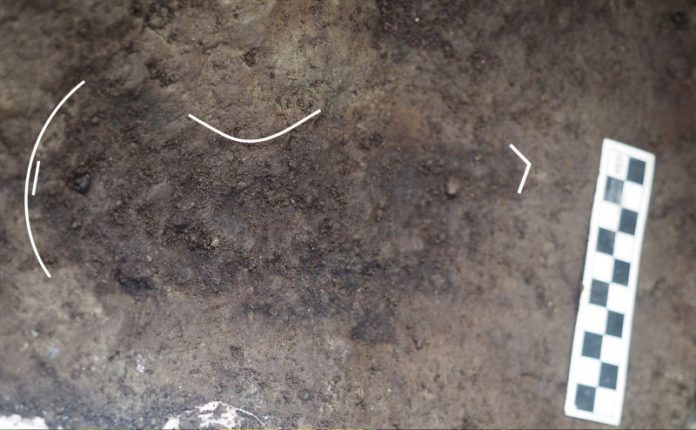Twenty-nine human footprints from the end of the last Ice Age are fueling discussion about America’s first immigrants.
13,000 years ago, three people disembarked from their boat and headed up a beach, but they suddenly stopped to watch something. It’s amazing to think that part of their journey has been preserved until today. Those late Pleistocene footprints are the oldest of their kind in North America, but researchers expect the discovery may push others to search for more, perhaps even older ones.
In 2014, Duncan McLaren, an anthropologist at the Hakai Institute and University of Victoria in British Columbia, was exploring the shoreline of Calvert Island, British Columbia, Canada, with a team of colleagues and representatives from the Heiltsuk First Nation and Wuikinuxv First Nation. They were interested in finding archaeological deposits from when the sea level was about 2 to 3 meters (6 to 10 ft.) lower following the last Ice Age, 11,000 to 14,000 years ago.
The Star reports that they never dreamed to make a find with such an impact – the earliest footprints found in North America to date. The first of 29 defined footprints pressed into light brown clay was unearthed in 2014.
2015 and 2016 digs expanded the muddy excavation pit and brought more footprints to light. The footprints vary in size and researchers believe they were made by two adults and a child – most of the discernable footprints were right feet and suggest the people were barefoot when they made the tracks.
A PLOS One paper on the discovery states that the team are certain the tracks are human and not left by the hind paws of large black or grizzly bears (which are rare on the island, but not in the surrounding area and somewhat resemble human footprints) because of the “clear arch, toe and offset heel attributes.”
According to Newsweek, the team found many more footprints, but they were heavily trampled and couldn’t be measured. The clay footprints were probably preserved because they were filled in by sand and covered by thick gravel and another layer of clay. Radiocarbon dating based on sediment found will some of the footprints and also two pieces of preserved wood from the same strata (archaeological level) date the marks to 13,000 years old.
While there are some older footprints which have been discovered in South America and other parts of the world , Michael Petraglia from the Max Planck Institute for the Science of Human History, who edited the PLOS One paper, told Newsweek, “This is a spectacular find as human footprints are rare in the archeological record. Often they are either not preserved or recognized by archaeologists.”
The footprints were not made as a clear trackway, instead the researchers write they “more likely represent a congregation site […] This type of pattern results from people concentrating their activities in an area and may be centered around a focal point.” Furthermore, they suggest “The footprints were impressed into a soil just above the paleo-shoreline, possibly by a group of people disembarking from watercraft and moving towards a drier central activity area to the north or northwest.”
McLaren told The Star, “As this island would only have been accessible by watercraft 13,000 years ago, it implies that the people who left the footprints were seafarers who used boats to get around, gather and hunt for food and live and explore the islands.”
Apart from the rarity of finding archaeologically significant footprints in general, the finding on Calvert Island also provides more support for the hypothesis that migration into the Americas varied . Specifically, it’s evidence that humans traveling from Asia followed the Pacific coastline and didn’t just push their way into the interior. McLaren, said “This provides evidence that people were inhabiting the region at the end of the last ice age. It is possible that the coast was one of the means by which people entered the Americas at that time.”
Petraglia added , “It’s not only the footprints themselves that are spectacular and so rare in archeological context, but also the age of the site. It suggests an early entrance into the Americas .”
Finally, McLaren stated that this find opens the door to more research.
















The Quaternary glaciation began 2.58 million years ago and continues to the present, and is thus the current ice age.